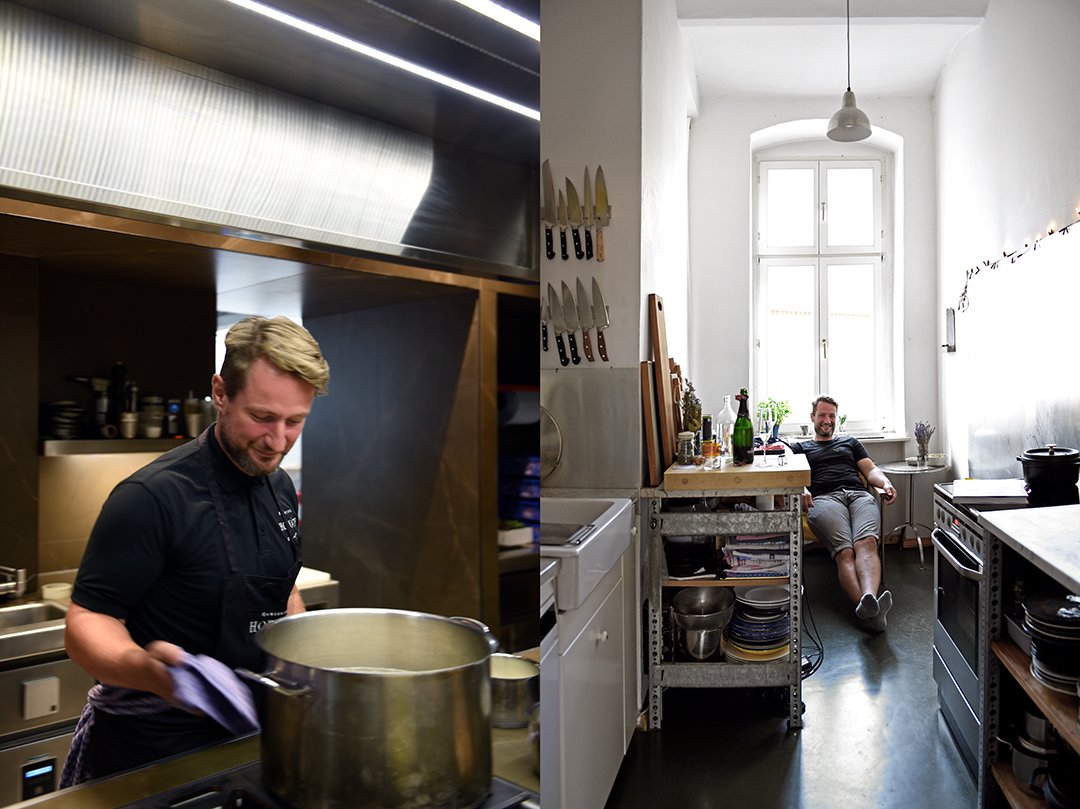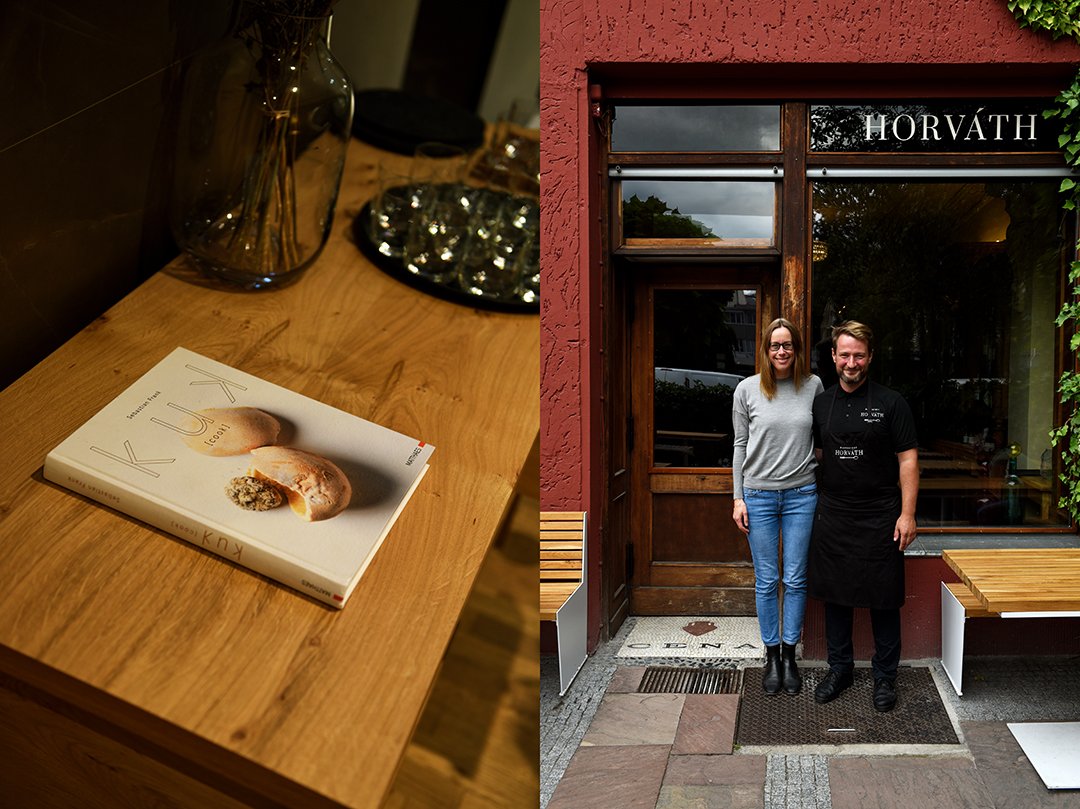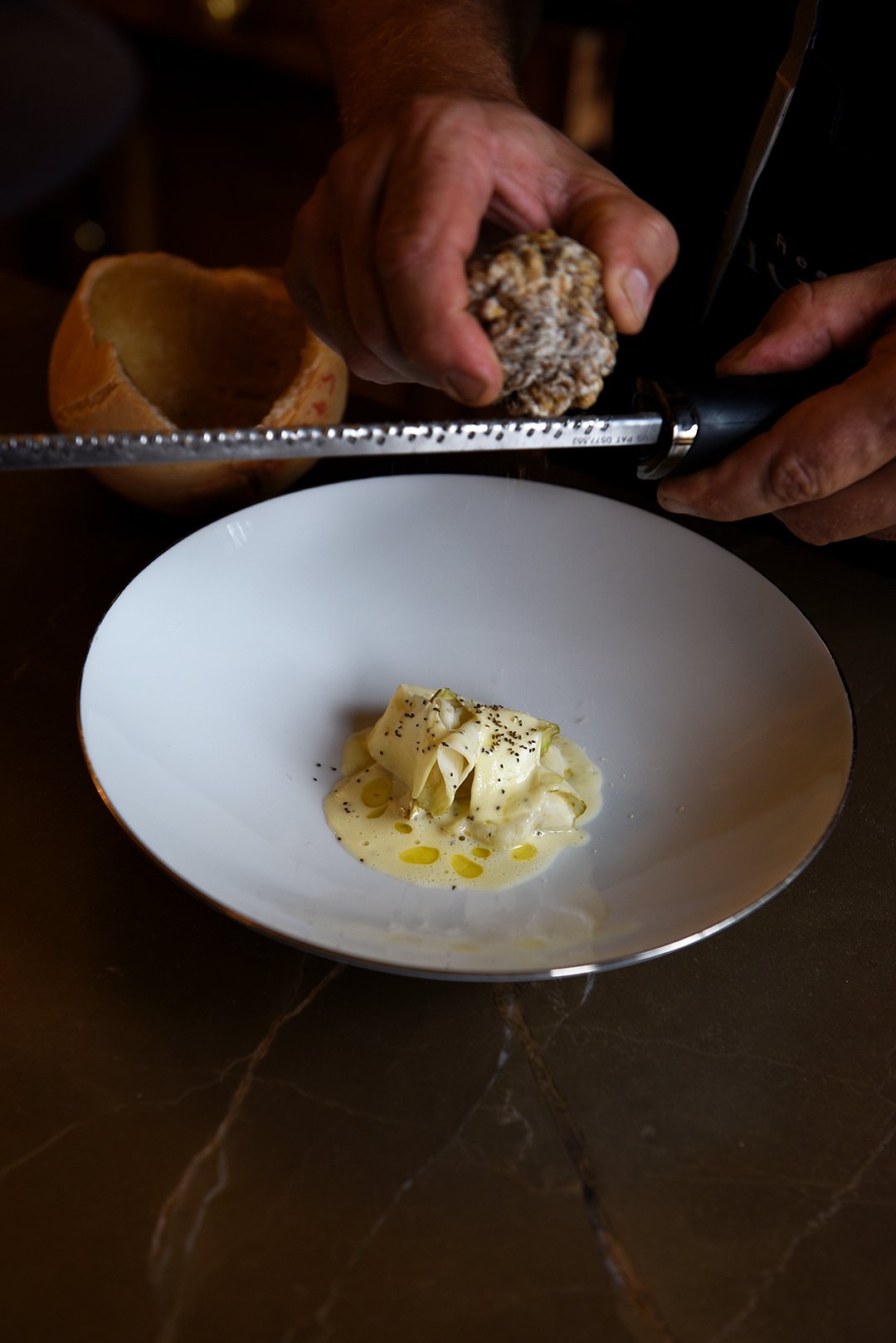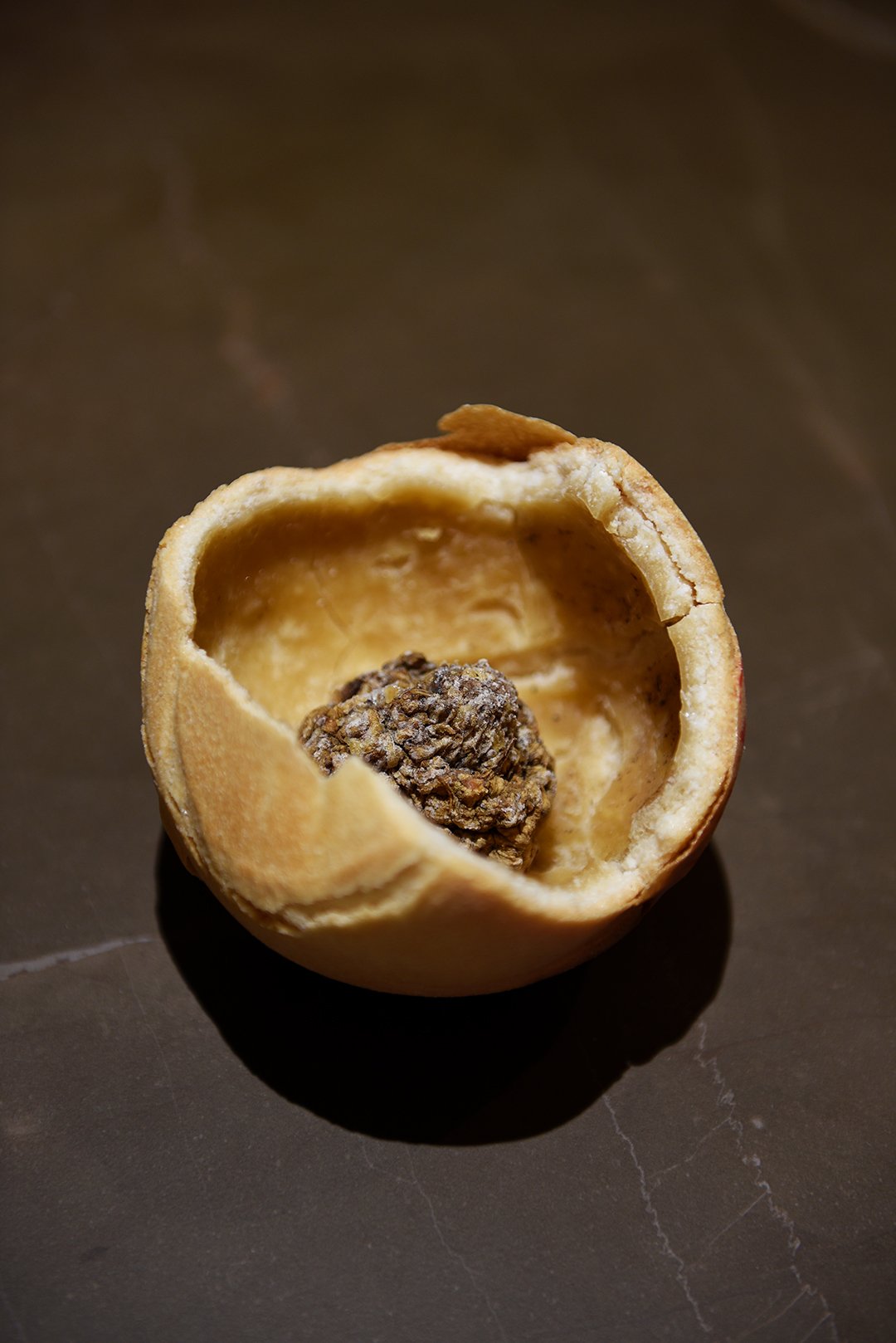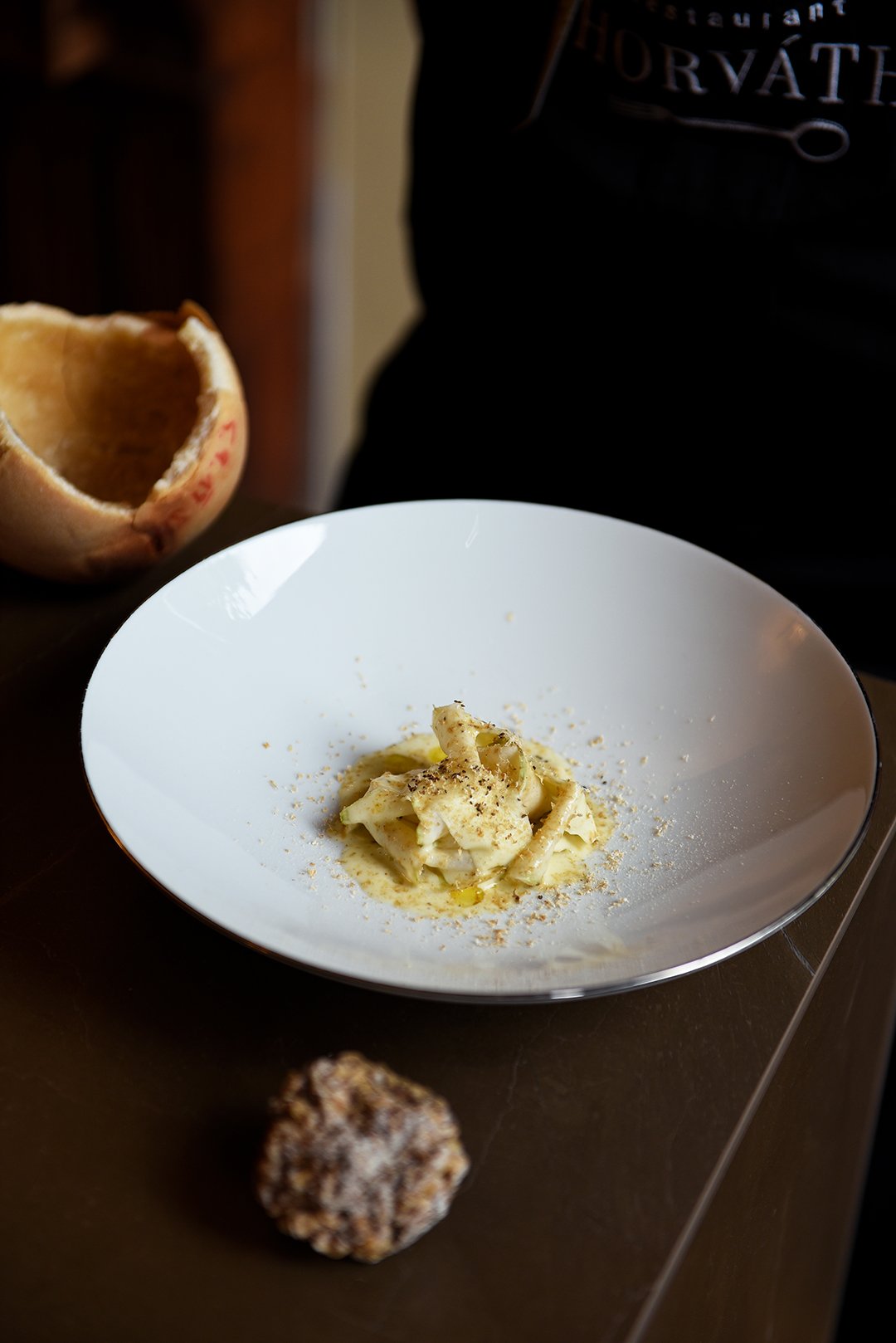Meet In Your Kitchen | Sebastian Frank's Horváth - Austrian Roots in Berlin
This post is part of my Meet in My Kitchen podcast: How did we get to where we are in life & what does food have to do with it
"When there’s a feeling coming up like Can this dish compete with the one before, did I go a step further? then I try to push it away. It does come up, there’s nothing I can do to avoid it, especially when I remove a dish from the menu that was the bomb. That’s just the way it is, the quality in developing new dishes can’t always be the same. If I were a machine and I could only create dishes that are the bomb, I’d do it, but I can’t." - Sebastian Frank
Two worlds fruitfully combined in the midst of Kreuzberg: Austria and Berlin. His home country, Austria, feeds the chef Sebastian Frank with the knowledge, passion, and inspiration he needs to create unique dishes of rare honesty. He built up one of the capital's most praised restaurants, he has been rewarded with 2 Michelin Stars but when you talk to him, he makes it sound so easy. And somehow it is. Some people have a genius mind and still manage to keep their feet on the ground.
Together with his partner, Jeannine Kessler, Sebastian moved to her home city, Berlin, 10 years ago and thanks to fortunate circumstances they both took over the Horváth restaurant and turned into the gem it is today.
"Women are just better chefs and I’m convinced that every man who is a good chef has a strong feminine side."- Sebastian Frank
For a long time, the Austrian chef thought he missed out on international experiences, that he couldn't compete with other chefs who did work abroad, particularly the chefs who worked in French kitchens celebrating haute cuisine. Little did he know that exactly this would become his greatest asset.
Although Sebastian started to learn in kitchens at a young age, at 14, it was only in his late teens and twenties that he learned about all those praised culinary luxury products, about a way of cooking that could possibly be rewarded with Michelin Stars and Gault Millau rankings. He was hooked but he still needed time to find himself in the vast culinary universe and all its possibilities. Yet when he stopped looking outside but opened up towards what he already had inside himself, he found the answer he was looking for. He says that he only discovered the confidence to trust himself and work with what he had found inside himself when he was 30, when he started working at Horváth.
Growing up in eastern Austria, close to the border to Hungary, only experiencing the local cuisine until he reached his twenties, smelling, tasting, and working with just local produce and products of exceptional quality, left a mark deeper than he expected at that time. Sebastian noticed that when it comes to the cuisine and the products that he up grew with, no one can fool him.
Being limited opened up his mind - and the flood gates - to a more profound knowledge and understanding of the food that he had had on his plate all his life. He experienced a much deeper level of tastes and textures by working with just a small range of vegetables. He wasn't distracted anymore. He could study a celery root, carrots, beets, potatoes until he totally understood their flavor profile. He could dive into the regional recipes until he totally understood what makes or breaks them. And at that point, he could start playing. Sebastian also had another great advantage, he already had the emotional connection that you need for true inspiration. And this emotional connection took him right back to his childhood, to his own roots and memories.
Today, Sebastian Frank plays with an imperturbable down-to-earth confidence that is impressive. He only needs to visit his culinary archive in his head to find an endless source of old knowledge and new ideas to feed his kitchen repertoire. It's not arrogance, he is open to other opinions and criticism, but he himself knows best when something is right - and then he makes his decision within seconds.
Usually I'm a rather chatty person when I go to restaurants but when I indulged into a 9-course dinner at Horváth, accompanied by non-alcoholic drinks based on vegetables, fruit, and broth that were just as refined as the compositions on the plates, even I had to keep my mouth shut and just enjoy the full range of tones that Sebastian plays with; sometimes they are harmonic or a harsh contrast, familiar or a surprise, quiet or loud, sometimes they build up slowly but then explode so vibrantly that it makes you smile.
The recipe Sebastian shared with me is called Celery, Young and Aged. One part of this recipe is a celery root that has aged in salt dough for a year and that's being grated over the dish. It looks like white truffle, is packed with umami, tastes like concentrated salted celery, and looks absolutely stunning. The crusty salt dough shell, when it's cracked open, looks a bit like Parmesan rind. You automatically feel a lot of respect for this product that needed so much time to age and that people have been taking care of for a whole year. You can't really detach this feeling from this dish. However, if you don't feel like waiting a year to try out Sebastian's recipe you can either make the alternative celery salt (which I bagged him to come up with) or order an aged celery from the Horváth shop (which I highly recommend).
The podcast episode with Sebastian Frank is in German. You can listen to the Meet in My Kitchen podcast on all common podcast platforms; there are English and German episodes. You can find all the blog posts about these podcast episodes including my guests’ recipes here on the blog under Meet in Your Kitchen.
Listen to the podcast episode with Sebastian on:
Spotify / Apple / Deezer / Google / Amazon / Podimo
On Instagram you can follow the podcast @meetinmykitchenpodcast!
Celery, Aged and Young
by Sebastian Frank / Horváth
(from his book KuK - cook, published by Matthaes Verlag, 2019, in German, you can order the book here)
The aged celery in this recipe ripens in salt dough for 1 year*. Alternatively, you can order an aged celery from the Horváth online shop or use celery salt instead - you can find both recipes for the aged celery and celery salt below! You can buy the celery seeds used in this recipe in spice shops or online.
Serves 2
* For the aged celery in salt dough
You'll only need some of the aged celery for this recipe. Please weigh the ingredients for accuracy and don't use cups.
250g / 9 ounces instant flour (doppelgriffiges Mehl)
165g / 6 ounces fine salt
160ml / 2/3 cup water, at room temperature
1 whole knob celery, roughly as large as a fist, with skin but without the green
In a medium bowl, combine the flour, salt, and water until smooth. Form into a ball, cover with a kitchen towel, and let rest, at room temperature, over night.
Preheat the oven to 220°C / 425°F.
Rinse the celery, pat dry, and cover evenly with the salt dough then transfer the celery to a baking sheet and bake for 20 minutes. Reduce the heat to 180°C / 350°F and bake for another 40 minutes. Transfer to a cooling rack and let cool completely (don't remove the salt dough crust!).
Store the celery in the salt dough crust in a place with a constant temperature of about 15-20°C / 60-70°F. In the first 2 months, flip the celery every second day so that the moist bottom side is at the top. In the following 6 months, turn the celery once a week. In the last 4 months, you don't need to turn the celery at all.
For the celery salt
2 tablespoon celery seeds
5 tablespoons Maldon sea salt flakes (or another flaky sea salt)
In a medium, heavy pan, toast the celery seeds for a few seconds; they shouldn't get dark. Transfer to a mortar and crush lightly with a pestle, add the salt, and mix to combine. Store the celery salt in an airtight container.
For the chicken soup
You'll only need 200ml / about 3/4 cup of the soup; you can use the remaining soup for other recipes.
500g / 18 ounces chicken carcass
300g / 11 ounces chicken skin
1 medium onion, peeled and cut in half
1 garlic bulb, with skin, cut in half
100g / 4 ounces carrots, peeled and diced
150g / 5 ounces celery, peeled and diced
100g / 4 ounces leek, cut in half
30g / 1 ounce parsley stalks
5 allspice berries
3 star-anise
10 cloves
5 juniper berries
2 bay leaves
In a large pot, bring the chicken carcass, chicken skin, and 2.5 liters / 10 1/2 cups of cold water to a boil.
In a small pot or pan, sear the onion and garlic, cut side down, until very dark then transfer to the pot with the chicken carcass, along with the carrots, celery, leek, parsley, and spices, and gently simmer for 90 minutes.
With a large spoon, remove the chicken fat on top of the soup, transfer to a bowl, and set aside (you'll need the chicken fat warm and liquid for serving). Strain the soup through a very fine sieve and muslin towel and set aside.
Young celery
1 knob celery, roughly as large as a fist, with skin but without the green
Rinse the celery and, using a mandoline slicer, carefully cut into paper thin slices. Steam the celery slices for 2 minutes at 90°C / 190°F or until tender but al dente. Let them cool.
Toasted celery seeds (for serving)
20g / 3/4 ounce celery seeds
In a hot, dry pan, toast the celery seeds briefly until dark.
For finishing the chicken soup
200ml / 3/4 cup plus 2 tablespoons of the chicken soup
30g / 2 tablespoons unsalted butter
3 large egg yolks
Salt
In a small saucepan, warm up the chicken soup and butter until hot, it shouldn't start boiling (it should be 80°C / 175°F). Remove the pan from the heat, whisk in the egg yolks to bind the soup, and season to taste with salt.
For serving, arrange the steamed celery slices on a large, deep plate. Pour a little bit of the whipped chicken soup around the celery slices. Sprinkle with the toasted celery seeds, and drizzle some of the chicken fat on top. Break open the salt dough crust of the aged celery, remove and discard the salt shell, and grate some of the aged celery all over the plates. Alternatively, sprinkle with a little celery salt. Enjoy immediately.










